13 Plants That Supplement Your Air Purifier

According to the Environmental Protection Agency, current research suggests people spend roughly 90% of their time indoors.
It’s reasonable to assume that time spent indoors is safe; after all, there is no chance of being in a car accident or injuring yourself on a sidewalk. Indoor jobs, such as office work, do not involve the significant risk of injury that you might have from construction or manufacturing careers.
But there is a significant health risk with so many people spending so much time indoors: air pollution.
While air pollution is commonly associated with outdoor smog from cars and industry, there is now a growing concern for the indoor air quality. The EPA has stated that “air within homes and other buildings can be more seriously polluted than the outdoor air in even the largest and most industrialized cities.”
Household toxins, including benzene, formaldehyde, carbon monoxide, and trichloroethylene can cause significant respiratory and health issues, leading many people to seek air purification technology, including a HEPA filter and other air cleaners. But there is a natural air cleaner that is older than mankind itself: plants.
By supplementing your HEPA filters with plants, you can significantly improve your air quality and have better health, even when the house is sealed away from winter chills and summer heat.
Plants, Clean Air, and...Spaceships?
Humans have always had a sneaking suspicion that plants are good for our health. We knew they produced oxygen, but it wasn’t until
NASA got involved that we discovered plant life actually cleans air.
Why an aeronautics and space organization? Because NASA needed a way to produce clean, healthy air for astronauts. They tested plants in chambers and made a momentous discovery: plants don’t just release oxygen, they literally remove toxins and airborne particles. Once this discovery was made, more research was launched, leading to an explosion of new information.
Why an aeronautics and space organization? Because NASA needed a way to produce clean, healthy air for astronauts. They tested plants in chambers and made a momentous discovery: plants don’t just release oxygen, they literally remove toxins and airborne particles. Once this discovery was made, more research was launched, leading to an explosion of new information.
How Do Plants Purify the Air?
It’s pretty remarkable. Plants absorb air through pores on the surface of their leaves, taking in air and using it to assist in photosynthesis, the process that converts light into plant fuel. Plants use CO2, or carbon dioxide during photosynthesis, but while they are taking in CO2, they also take in other gases, including toxins that are harmful to our health.
How Plants Supplement Air Purifiers
If you have an
air purifier, do you need house plants? For that matter, if you have plants, do you need an air purifier? Aren’t they both doing the same job?
While it’s true that both are cleaning the air, they are cleaning separate toxins, so both are needed for healthy air.
A HEPA filter is best for removing pollen, pet dander, and other airborne particles, but it’s not good for removing many gases, which is where plants come in. Many of the gases are so small that they cruise through the air purifier and come out untouched, allowing them to continue roaming through your home.
Plants, on the other hand, can filter out these microscopic toxins, but are not effective for removing pet dander and pollen.
Therefore, the combination of plants and air purifiers is the best option for your home. Another option is to go with a HEPA air cleaner with an activated carbon filter. If you are looking to remove stronger smells like cigarette smoke then you will want at least 3 pounds of activated carbon.
While it’s true that both are cleaning the air, they are cleaning separate toxins, so both are needed for healthy air.
A HEPA filter is best for removing pollen, pet dander, and other airborne particles, but it’s not good for removing many gases, which is where plants come in. Many of the gases are so small that they cruise through the air purifier and come out untouched, allowing them to continue roaming through your home.
Plants, on the other hand, can filter out these microscopic toxins, but are not effective for removing pet dander and pollen.
Therefore, the combination of plants and air purifiers is the best option for your home. Another option is to go with a HEPA air cleaner with an activated carbon filter. If you are looking to remove stronger smells like cigarette smoke then you will want at least 3 pounds of activated carbon.
Plants and Allergies: A Word of Caution
When selecting plants for your home, it’s important to keep in mind your
allergies. After all, it won’t do you much good to have plants cleaning the air when their pollen is making you miserable.
Take into consideration a plant’s OPALS (Ogren Plant-Allergy Scale) rating. This system of measurement was created in 2000 and rates plants on a scale of 1 to 10, 10 being the highest possible allergy irritant and 1 being almost no allergy contributions whatsoever.
The scale is based on more than just pollen inhalation; it actually takes into account contact and odor-based allergic relations.
This scale has been used to rate numerous houseplants, giving you a clear picture for which items will be best for your allergies. Common plants such as daisies, juniper, English ivy, sunflowers, African violets all have high OPALS ratings, so if you suffer from allergies, you’ll want to find different plants to filter your home air.
Take into consideration a plant’s OPALS (Ogren Plant-Allergy Scale) rating. This system of measurement was created in 2000 and rates plants on a scale of 1 to 10, 10 being the highest possible allergy irritant and 1 being almost no allergy contributions whatsoever.
The scale is based on more than just pollen inhalation; it actually takes into account contact and odor-based allergic relations.
This scale has been used to rate numerous houseplants, giving you a clear picture for which items will be best for your allergies. Common plants such as daisies, juniper, English ivy, sunflowers, African violets all have high OPALS ratings, so if you suffer from allergies, you’ll want to find different plants to filter your home air.
The Best 13 Houseplants for Supplementing Your Home’s Air Purifier
Nearly every plant found on the globe can act as an air cleaner, making them great additions to your
HEPA filter. Some plants, however, are better than others. For a houseplant, however, it needs more than just the ability to purify air and remove toxins like carbon monoxide. It needs to be small enough to fit comfortable in a home, it need to be easy to care for, and it needs to be safe for children and pets, preferably with no sharp needles.
With that in mind, here are 13 of the best houseplants you can choose for your home.
With that in mind, here are 13 of the best houseplants you can choose for your home.
Peace Lily

It just sounds healthy, doesn’t it? The peace lily is a gorgeous plant that is easy to care for and requires minimal light and water. The peace lily has shown an ability to remove many toxins, making it highly effective as a supplement for your home’s air filtration system.
Peace lily, despite the name, can be toxic if ingested. So, anyone with children or rambunctious pets will want to make sure the plant is out of reach. However, if you place it in a high corner, keep it shaded, and water it weekly, you’ll have a houseplant that filters your air for years.
Peace lily, despite the name, can be toxic if ingested. So, anyone with children or rambunctious pets will want to make sure the plant is out of reach. However, if you place it in a high corner, keep it shaded, and water it weekly, you’ll have a houseplant that filters your air for years.
Florist’s Chrysanthemum
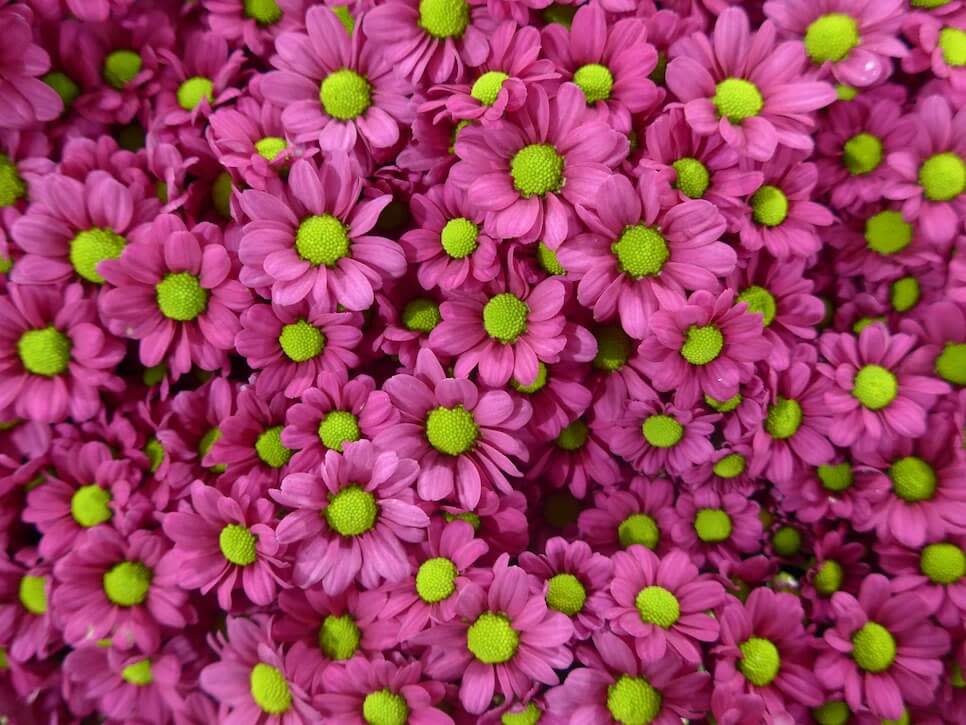
By producing colorful blooms in a wide variety of colors, the florist’s chrysanthemum, also known as the florist’s daisy and hardy garden mum, is extremely popular for decorating homes. Thanks to an excellent filtration process, it’s also useful for getting rid of harmful pollutants such as ammonia and toluene.
People with allergies, however, may want to avoid the florist’s chrysanthemum, as it can be an irritant for people affected by ragweed, daisies, and sunflowers.
People with allergies, however, may want to avoid the florist’s chrysanthemum, as it can be an irritant for people affected by ragweed, daisies, and sunflowers.
Devil’s Ivy

Often sold in decorative hanging baskets, the devil’s ivy is one of the most visually-stunning plants you can find. It has evergreen vines and small green leaves that have cream-colored hues, giving it a recognizable appearance in any room.
It is easy to care for, although it thrives the most when it can enjoy direct sunlight. It also has the ability to filter lots of harmful air pollutants, making it a popular choice for home air purification.
It is easy to care for, although it thrives the most when it can enjoy direct sunlight. It also has the ability to filter lots of harmful air pollutants, making it a popular choice for home air purification.
Red-Edged Dracaena

This upright shrub produces narrow leaves that are usually green, yellow, or cream colored, and when it matures, it often produces small white flowers and reddish-orange berries.
So, it not only looks interesting, it helps filter air and needs minimal care. Keep the soil slightly moist and you’ll have an interesting plant that filters your air for years.
NASA identified this plant for its ability to filter numerous airborne particles, including benzene, trichloroethylene, and xylene.
So, it not only looks interesting, it helps filter air and needs minimal care. Keep the soil slightly moist and you’ll have an interesting plant that filters your air for years.
NASA identified this plant for its ability to filter numerous airborne particles, including benzene, trichloroethylene, and xylene.
Snake Plant

Also known as “mother-in-law’s tongue,” this is one of the easiest plants to care for, requiring minimal attention and maintenance. With a reputation for improving air quality, the snake plant has become a favorite among homeowners who want better air purification but don’t have a lot of experience with keeping plants.
While this plant prefers to have lots of life, it does extremely well in low-light settings. This versatility adds to its heartiness and helps it stay alive even when you neglect to care for it.
While this plant prefers to have lots of life, it does extremely well in low-light settings. This versatility adds to its heartiness and helps it stay alive even when you neglect to care for it.
Aloe Vera

The word “aloe vera” has become synonymous with healthy, and while some claims are more grounded than others, one is certain: the plant is excellent for purifying air. These plants grow fast compared to other supplements, and look great on a shelf or table.
They can even flower indoors, but they need to reach maturity first, which takes about four to six years. To reach flowering stage, a strong source of light will be needed.
They can even flower indoors, but they need to reach maturity first, which takes about four to six years. To reach flowering stage, a strong source of light will be needed.
Bamboo Palm
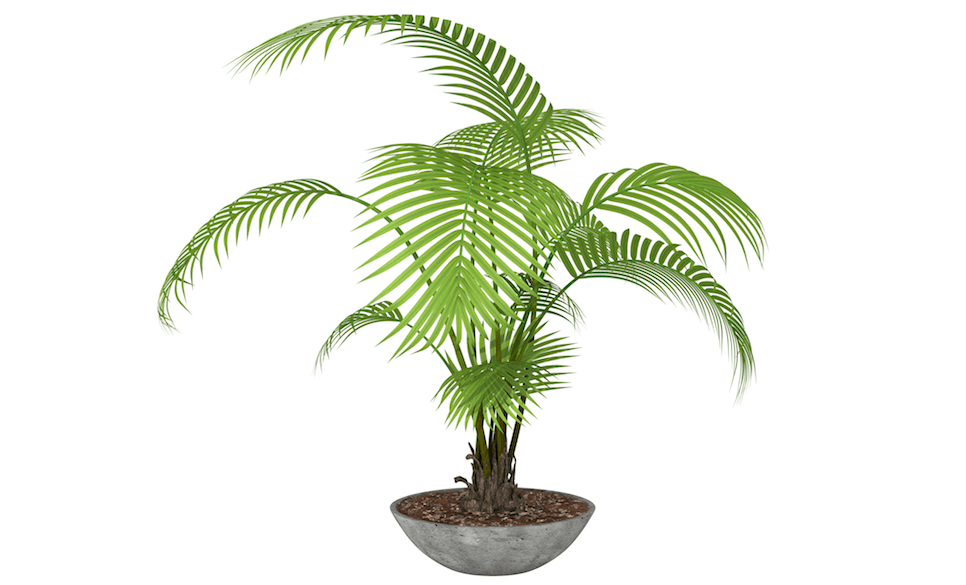
This is one of the top plants for filtering
formaldehyde, a very common airborne particle in homes. These plants are able to survive with full sun and bright light, so you’ll want to find a space near windows or a glass door.
However, one of the main reasons that they are such powerful air cleaners is scale. They can grow to considerable size, and bigger plants, naturally, will take in more air. Keep the bamboo plant well trimmed or stand by and watch it reach as high as 12 feet!
However, one of the main reasons that they are such powerful air cleaners is scale. They can grow to considerable size, and bigger plants, naturally, will take in more air. Keep the bamboo plant well trimmed or stand by and watch it reach as high as 12 feet!
English Ivy
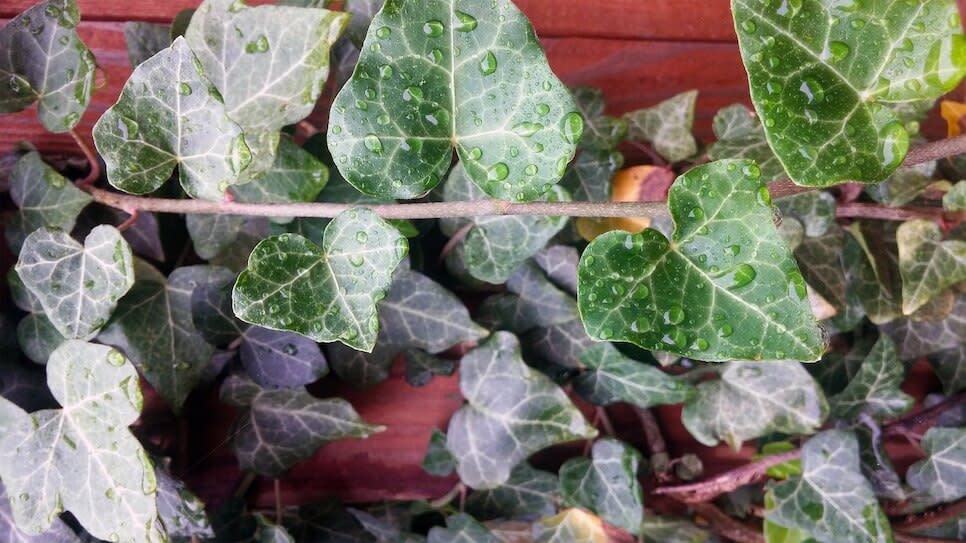
Also known as European ivy, this popular houseplant can be highly effective for filtering benzene, formaldehyde, and other toxins from the air. As an added advantage, there is also evidence that English ivy may reduce the amount of mold found in a home.
Although this climbing ivy is often used for outdoor landscaping, it can make an effective and visually-pleasing indoor plant as well. With a steady indoor temperature, generous watering, and direct sunlight, the English ivy can help maintain a healthy home and remove airborne particles.
Although this climbing ivy is often used for outdoor landscaping, it can make an effective and visually-pleasing indoor plant as well. With a steady indoor temperature, generous watering, and direct sunlight, the English ivy can help maintain a healthy home and remove airborne particles.
Spider Plan
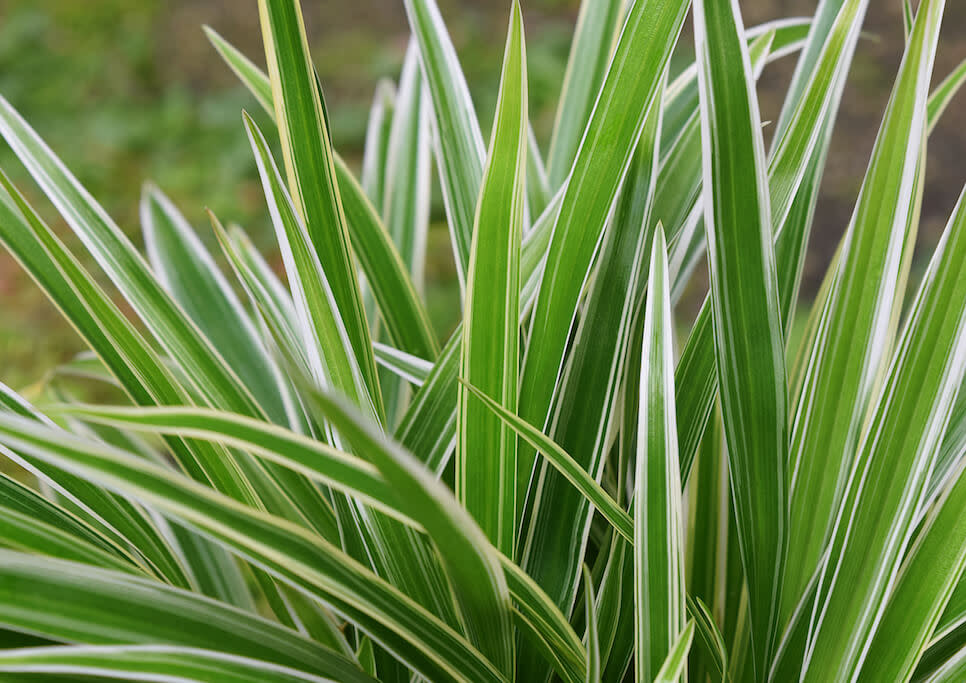
If you are new to plant ownership, yet still want something to supplement your air purification, a spider plant should be at the top of your list. These plants thrive in bright yet indirect sunlight (such as the back corner of a sunroom) and will grow shoots that eventually grow into separate spider plants.
The spider plant has an ingenious survival technique that makes it great for forgetful homeowners. It produces thick white roots that store food and moisture, allowing it to survive when you are less than attentive.
The spider plant has an ingenious survival technique that makes it great for forgetful homeowners. It produces thick white roots that store food and moisture, allowing it to survive when you are less than attentive.
Ficus Tree

Also known as weeping fig, benjamin fig, or just “ficus,” the ficus tree is a versatile plant that can be either big, small, bushy, leafy, or tree-like. The primary attraction for this plant is the shapely, elegant appearance, but it also has the ability to effectively purify indoor air, giving it a one-two punch as a houseplant.
This low-maintenance plant can grow to ten feet in height, making it an impressive specimen, and while the main variety has green leaves, some varieties have predominantly cream-colored leaves, giving it visual variety as well.
This low-maintenance plant can grow to ten feet in height, making it an impressive specimen, and while the main variety has green leaves, some varieties have predominantly cream-colored leaves, giving it visual variety as well.
Boston Fern

Although they require high humidity and plenty of light, the Boston fern is easy to grow and maintain, as long as they stay well hydrated. They can filter air throughout a home, but you’ll need to check the soil daily, making them less-than-ideal for casual planters.
With a full foliage of green leafy stems, the Boston fern is well equipped to filter the air in your home, taking out chemicals such as xylene and formaldehyde.
With a full foliage of green leafy stems, the Boston fern is well equipped to filter the air in your home, taking out chemicals such as xylene and formaldehyde.
Rubber Plant

Big, shiny leaves are the hallmark of the rubber plant. This tough and hearty plant can reach the ceiling in a few years, so you’ll want to plan for space before you purchase this tall houseplant.
A member of the ficus family (its scientific name is ficus elastica), the rubber plant gets its name from the rubbery sap that is found when the branches or leaves are cut. This sap can become messy and can be an irritant to skin and eyes, so be cautious if you have pets or children.
A member of the ficus family (its scientific name is ficus elastica), the rubber plant gets its name from the rubbery sap that is found when the branches or leaves are cut. This sap can become messy and can be an irritant to skin and eyes, so be cautious if you have pets or children.
Christmas Cactus
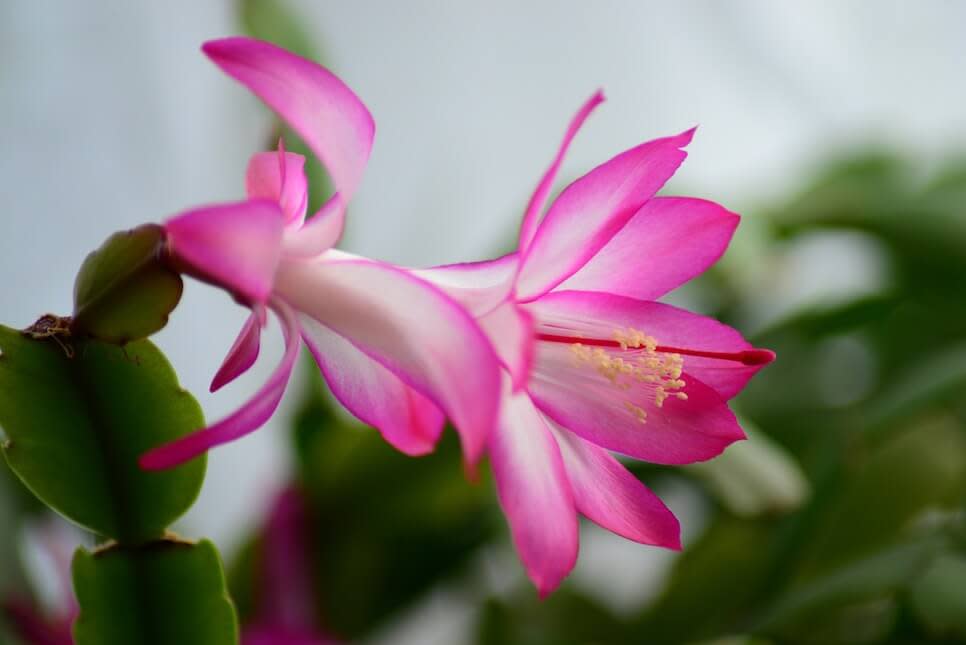
Because the plant usually blooms around the holidays, it has become affectionately known as the Christmas cactus. Come December, this houseplant produces large, bright flowers that grab your attention and provide an enticing splash of color to kitchens, living rooms, or even offices.
It’s part of the cactus family not because it has needles and grows in the desert, but because of its ability to store water. This makes it a hearty plant that even inattentive owners will be able to keep alive.
It’s part of the cactus family not because it has needles and grows in the desert, but because of its ability to store water. This makes it a hearty plant that even inattentive owners will be able to keep alive.
Houseplants and Oransi: A Healthy Combination!
If you combine these houseplants with a home air purification system and a HEPA filter from Oransi, you’ll be able to have clean, healthy air throughout the entire year. Say goodbye to indoor air pollution.
Contact us today at 888-281-3948 to learn more about our reliable, highly-effective room air purifiers!
Contact us today at 888-281-3948 to learn more about our reliable, highly-effective room air purifiers!
Want to learn more about cleaning your air? Check out the
Beginners Guide to an Air Purifier. We also recently wrote this guide on how to choose an air purifier.
Most Common Spring Allergies in America
Air Scrubber Vs Air Purifier
Other Articles That May Be of Interest
7 Ways to Improve Indoor Air QualityMost Common Spring Allergies in America
Air Scrubber Vs Air Purifier
